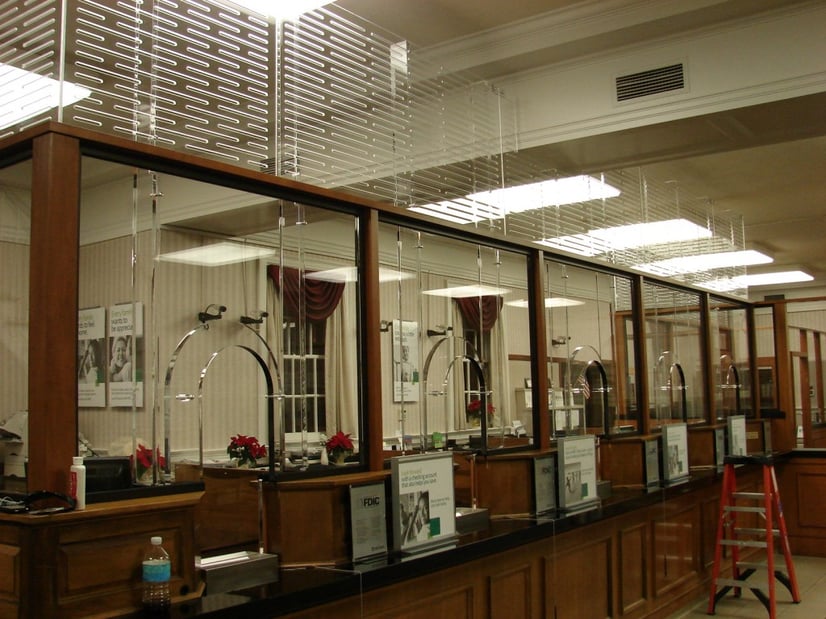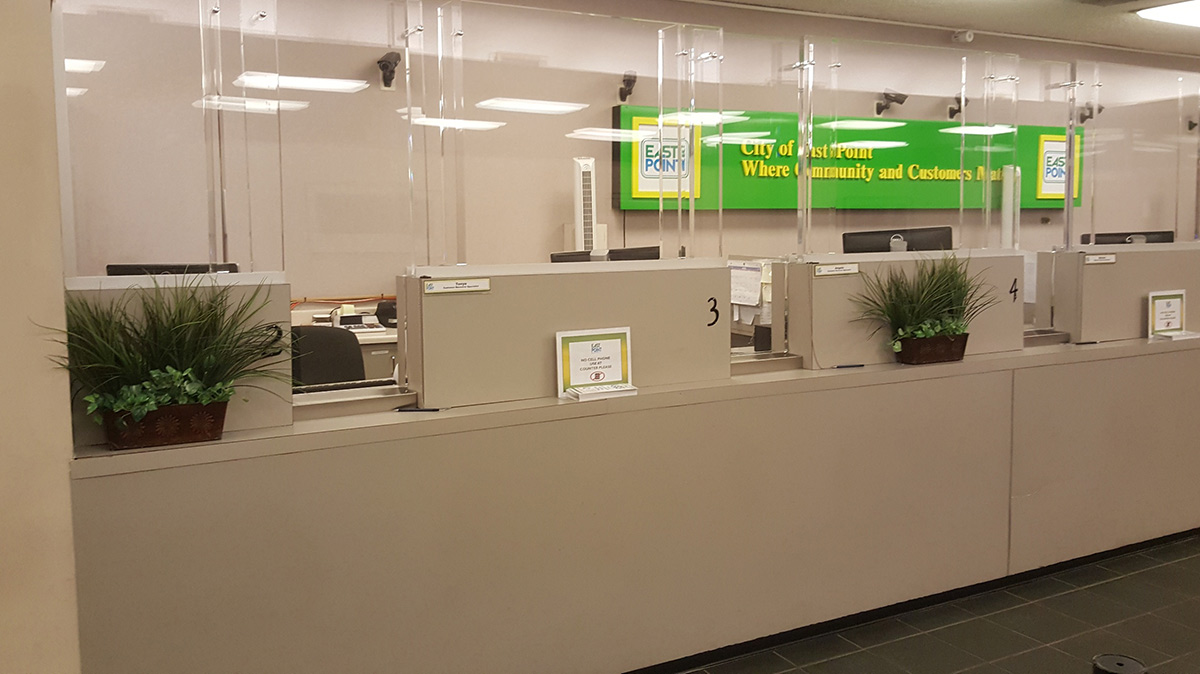Local units of government often assume that they’re extremely limited in what they can do to improve security in city buildings. There’s an unspoken sense that having an existing building leaves you with few options when it comes to installing a new bulletproof barrier system. Why else would so many businesses transform themselves into fortresses of grey steel and hazy bulletproof glass?
But that simply isn’t the case.
Todd Ross works for Total Security Solutions in Fowlerville, MI. He specializes in security barrier systems for municipalities, payment and utility offices, and other similar agencies. “I was just talking to a city near here. They had all these different windows, all these different opening sizes at their counters, and they just had no idea where to start, even asking ‘Do we need to shrink the wall to fit a bulletproof window?'” He laughs. “No, you don’t have to do that. … We aren’t selling cookie-cutter solutions that have to be crammed in or bolted over.”
And you don’t have to totally gut your building to accommodate ballistic components. Modern bullet-resistant security solutions can be a seamless part of your facility—without disrupting business or straining budgets.
Download the 5 Key Components of a Municipal Building Security Plan
Ballistic “Retrofits” for City Buildings and Offices
In the security industry, ballistic renovations are commonly called “retrofits.” A bulletproof fabricator like Total Security Solutions can come in, talk to your facility manager, take measurements, and design a complete ballistic retrofit that balances Safety + Aesthetics™ while blending into your existing structure.
Doors are a classic example. “A lot of times,” Ross says, “a municipality has a door they want to replicate. For example, a nice six-panel door.”
Generally, county supervisors and city building engineers tend to assume that if they want that door to provide cover and security, they’re going to need to replace it with gray steel. “That’s not at all the case,” Ross says. “In our shop at TSS, we can replicate that original six-panel door so that no one will know the difference. Identical door, but now it stops bullets.” Similarly, TSS can match existing trim and veneers, so that a new ballistically reinforced countertop matches the rest of the interior. “In part, that comes back to TSS. Because we have the carpenters, we have the mill shop, and we’re experienced with veneers. But it also has a lot to do with [TSS co-founder and CEO] Jim [Richards]. He’s not someone that’s going to say ‘No.’ He says, ‘Let’s figure this out.’”
Facility managers often begin to fret over budgets when they hear about this level of customization. But according to Ross, this is a situation where “custom” doesn’t mean “expensive”: “In order to do [bulletproof] right, you really need to be doing a lot of custom work to begin with. That’s why our teams are used to taking unique situations and engineering a solution that fits, but relies on standard sizes and shapes, and using materials and labor efficiently.”
“Value Engineering” a Bulletproof Glass System
Because TSS fabricates their systems in-house, they have many opportunities to “value engineer” that solution. In other words, they adjust the design to reduce expenses while giving greater attention to the areas of greatest threat. For example, TSS can make small adjustments to the placement of channels and buttresses. This results in fewer cuts (reducing labor) while creating better sight lines (increasing security).
This engineering process increases the value of the security solution even as it reduces the overall cost of the project.
According to Ross, “Seemingly small modifications throughout the system, when taken together, can create really big savings. At the same time, all of those adjustments are tuning that solution to better fit your space and needs. We use our expertise and understanding both to build a better system and to reduce your costs.”
For example, Ross points out that most municipal offices need to secure a payment counter. Typically, the ceiling will be about six feet from the countertop. Less adept bulletproof companies might choose to mount a single solid piece of bulletproof glass from counter to ceiling. That’s the easiest solution for them to fabricate and install. But that solution uses much more material than is necessary. It’s more expensive—and no more secure—than using five feet of ballistic glass, and then filling the final foot with a non-rated acrylic louver.

“arch”-style bulletproof glass teller line with a louver
Not only does this multi-piece window approach save you money, but it’s also a better solution overall. The louvered section allows the HVAC system to continue to function properly, preserving indoor air quality. It also creates a more comfortable working environment, as the louver reduces the “fishbowl effect” that plague lower-quality security barriers, where large spans of bulletproof glass unnaturally muffle and bounce sound.
A Full-Service Bulletproof Glass Company
TSS can consistently engineer the maximum value into a solution because they’re capable of handling the entire job—from the first sketches to the final polish. For most city buildings’ retrofits, there’s no need to bring in a separate architect, engineer, or find contractors to do the work.
That said, TSS has been doing this for decades and has plenty of experience working as part of a team. They can make architect’s sketches into reality, and support independent contractors through the installation process. Give them a call today to discuss your safety and security concerns.


